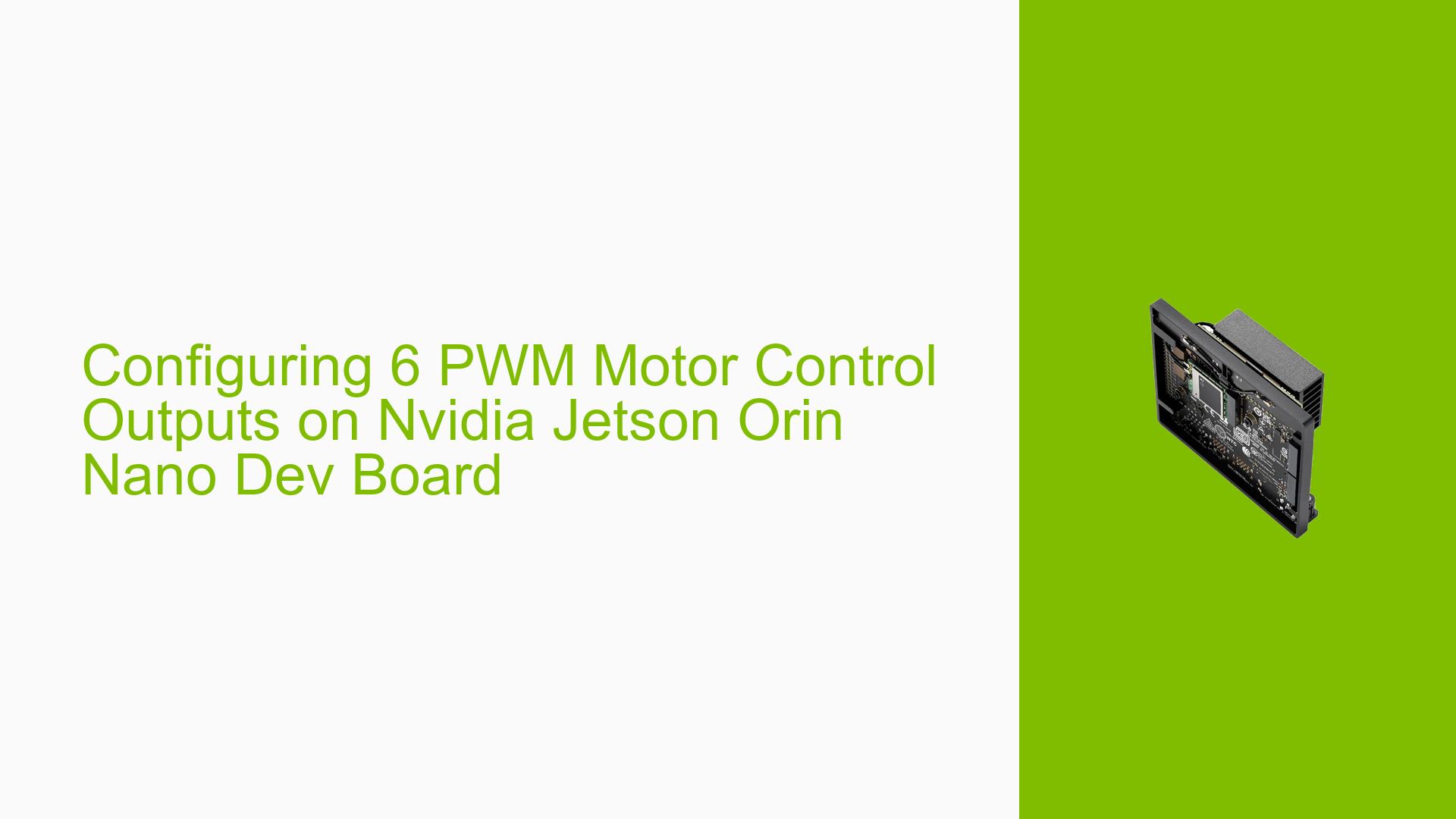Configuring 6 PWM Motor Control Outputs on Nvidia Jetson Orin Nano Dev Board
Issue Overview
Users of the Nvidia Jetson Orin Nano Development Kit are encountering limitations when attempting to configure multiple PWM (Pulse Width Modulation) motor control outputs. Specifically, the hardware appears to support only 3 PWM pins, which is insufficient for projects requiring 6 independent PWM outputs, such as certain robotics applications. This limitation impacts the ability to directly control multiple motors or servos without additional hardware or software workarounds.
Possible Causes
-
Hardware Limitations: The Jetson Orin Nano Development Kit has a limited number of dedicated PWM pins, restricting the number of direct PWM outputs available.
-
Design Constraints: The board’s architecture may prioritize other features over multiple PWM outputs, leading to this limitation for specific use cases.
-
Intended Use Case: The development kit may not be primarily designed for applications requiring numerous PWM outputs, focusing instead on other capabilities.
Troubleshooting Steps, Solutions & Fixes
Given the hardware limitations of the Jetson Orin Nano Development Kit, several approaches can be considered to achieve the desired 6 PWM motor control outputs:
-
Utilize Available PWM Pins:
- Identify and use the 3 available PWM pins on the Orin Nano for critical motor controls.
- Configure these pins using the appropriate GPIO libraries and PWM functions.
-
GPIO PWM Simulation:
- Implement software PWM using GPIO pins to simulate additional PWM outputs.
- Use libraries like RPi.GPIO or pigpio to create software PWM on standard GPIO pins.
- Example code snippet for software PWM using RPi.GPIO:
import RPi.GPIO as GPIO import time GPIO.setmode(GPIO.BCM) GPIO.setup(18, GPIO.OUT) pwm = GPIO.PWM(18, 100) # Create PWM instance with 100Hz frequency pwm.start(0) # Start PWM with 0% duty cycle try: while True: for duty in range(0, 101, 1): pwm.ChangeDutyCycle(duty) time.sleep(0.1) for duty in range(100, -1, -1): pwm.ChangeDutyCycle(duty) time.sleep(0.1) except KeyboardInterrupt: pass pwm.stop() GPIO.cleanup() -
External PWM Controller:
- Utilize an external PWM controller like the PCA9685.
- Connect the PCA9685 to the Jetson Orin Nano via I2C.
- This solution provides 16 PWM channels, more than enough for the required 6 outputs.
- Example code for controlling PCA9685 with Python:
from board import SCL, SDA import busio from adafruit_pca9685 import PCA9685 i2c_bus = busio.I2C(SCL, SDA) pca = PCA9685(i2c_bus) pca.frequency = 60 # Set PWM on channel 0 pca.channels[0].duty_cycle = 0x7FFF # 50% duty cycle -
UART-based Motor Controllers:
- Consider using UART-based motor controllers that accept serial commands.
- Utilize the UART ports on the Jetson Orin Nano to control these motors.
-
I2C or SPI Motor Drivers:
- Explore motor driver modules that use I2C or SPI for communication.
- These can often control multiple motors and may be more suitable for complex robotics projects.
-
Custom FPGA Solution:
- For advanced users, consider implementing a custom FPGA solution to generate multiple PWM signals.
- This can be interfaced with the Jetson Orin Nano through available GPIO pins.
-
Jetson Expansion Board:
- Research and consider using Jetson-compatible expansion boards that provide additional PWM outputs.
- These boards can often be easily integrated with the Orin Nano Development Kit.
When implementing these solutions, ensure proper power management and consider the current requirements of your motors. Always refer to the Jetson Orin Nano Development Kit documentation for pin assignments and electrical specifications to avoid damage to the board or connected components.
